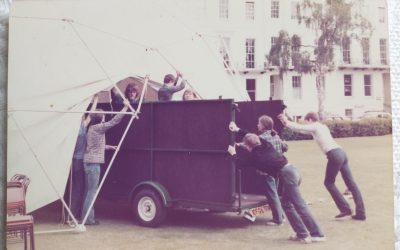There was lively debate at King’s College London following my talk yesterday. I had spoken about the interpreter’s task as I see it, taking as my title a remark of György Sebök’s, ‘Play the contents and not the container’. In my talk I used ‘contents’ to refer to music itself, and ‘container’ to mean all the things that can hold a player at arm’s length from the music itself – including the printed notes of the score, through which you have to learn to read the content.
It turned out that my performer’s way of talking about these things was difficult for some of my academic audience to take. ‘You have fallen among historians’, a professor reminded me, going on to point out that my attitude to performance was not unique to me, but was itself part of an aesthetic tradition. From the questions that followed, I became aware that I had unwittingly cut across some prevailing academic theories, or at least across certain terminologies. It was great, though, because when the question-and-answer session was finished, there was a further long and animated discussion over a glass of wine, just the kind of thing that these ‘colloquia’ are supposed to provoke. Nobody seemed to want to leave. Many of the students came up to speak to me, and I was touched to find how deeply they cared about music.




How interesting! As an editor of music for children and developing players, I spend much of my time trying to produce a ‘container’ that doesn’t interfere with the content; indeed one that draws the players attention to the content in a useful and uncluttered way. I often lecture on this subject and am always surprised that most educators do not realise the importance of allowing players in the early stages of musical and technical exploration to have clear contact (and interaction)with the music itself. In the very earliest stages of mastering an instrument I think we often present far too much pre-packaged interpretation. It’s nice to allow (and encurage) players to think for themsleves about what the composer might have wanted. Perhaps going along this route we might grow a breed of players who don’t all sound the same?
In France young children rarely learn to play an instrument at school and have to attend their local ‘conservatoire’. After a ‘musical awakening’ course, where they will participate in musical games, and also have the opportunity to experiment with various, mainly percussion, instruments they have to do a year’s ‘solfège’ (musical theory) before being allowed to take up an instrument. Thus they learn about rhythm, harmony, note values etc without being able to put it all into practice. This not only separates the music and the container, but places a greater value on the container. It also very often extinguishes any musical creativity on the part of the young learner.
“Arm’s length” is an interesting phrase, Susan. In traditional western visual art, the artist tries to represent on paper or canvas some physical object or scene which is outside him or herself, and does so by making marks on an easel standing physically between the artist and the object, an easel at precisely arm’s length distance from the artist.
In traditional Chinese calligraphy, by contrast, the artist is trying to capture some ineffable essence of an object (which may be a Chinese language character) for which he or she has to look through the object in order to grasp. What is represented on the paper is (if the artist is successful) something beyond a mere depiction of the object.
It seems to me that your view of musical performance is closer to the Chinese view of visual art: the performer is trying to capture and re-create some ineffable essence of the music, which the printed notes only point the way to. One way that the performer can fail to do this is simply to play the notes, that is, the container, as if he or she was merely drawing an object and not its essence.
That’s such an interesting comment, Peter. I shall ponder it further. Thank you!